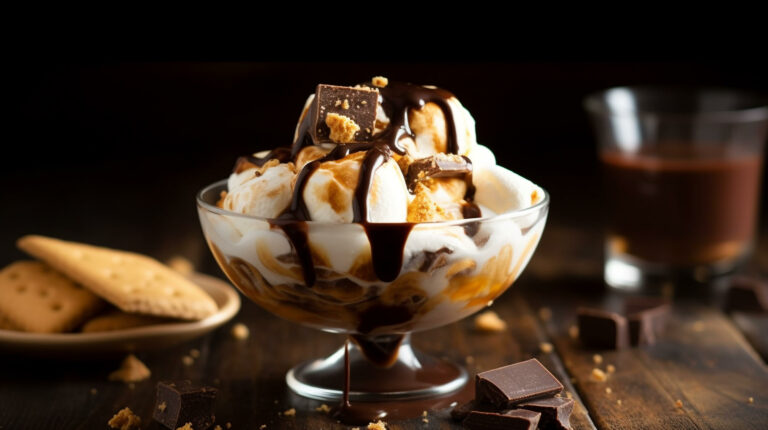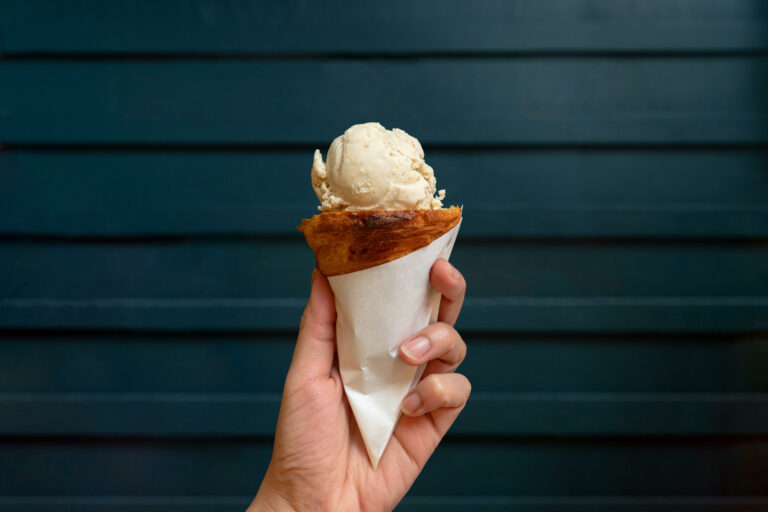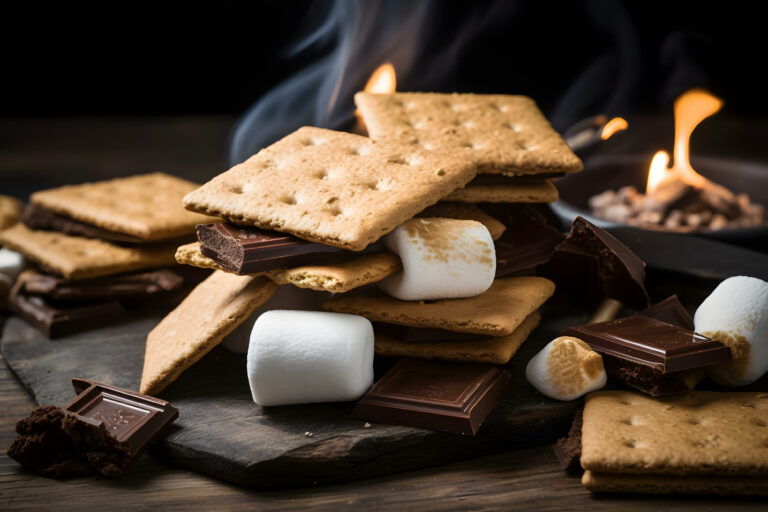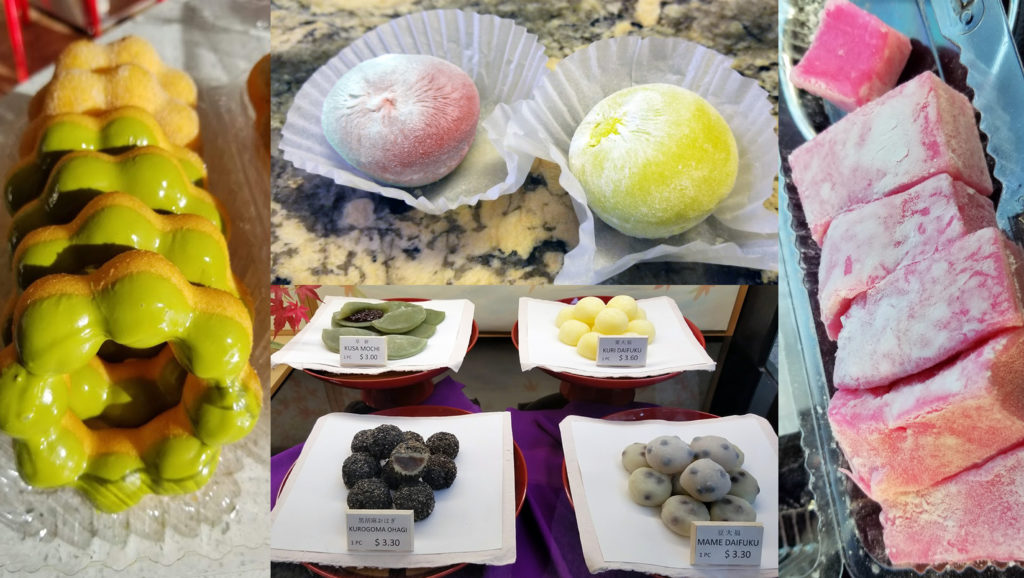
What is mochi?
Mochi is a traditional Japanese dough made out of mochigome, a Japanese short-grain glutinous rice. It is used in many desserts and dishes for its one-of-a-kind texture.
Taste & Texture
The flavor of mochi itself is pretty much nonexistent. If anything, it tastes like subtly sweetened cornstarch. This neutral flavor is actually a desirable characteristic which allows it to work well with many different sweet or savory ingredients.
Since it isn’t big on flavor, it’s primarily characterized by its uniquely soft, smooth, squishy and borderline gooey texture. The consistency is light and chewy, it is effortless to bite into it. However, once you do, you’ll experience its stickiness and stretchiness that often requires extra chewing, especially in its purest form.
Because it can be quite sticky in its purest form, it is often coated with an edible powder like cornstarch or powdered sugar. There is really nothing exactly like eating this pillowy-soft and chewy rice dough. However, the most similar experience would likely be eating a cross between a gummy candy and a marshmallow.
So, how does it feel to eat this soft, stretchy snack? You know how your eccentric aunt goes up to random chubby babies, pinches their cheek and tells them “I could just eat you up!” because they’re so cute? Eating mochi is kinda like that, but in a completely non-creepy and socially acceptable way.
Origin
Although it is clear that the history of this mochigome food is deeply rooted in Japan, the method of pounding the ingredients was adapted from China. Glutinous rice has been a part of Chinese food history for millenia. In Japan between the 8th and 12th centuries, this dessert was used as a religious offering to the gods as it symbolizes good fortune. It’s still eaten today during Japanese New Year’s celebrations as a symbol of prosperity.
Variations of mochi
mochi ice cream

This is one of the most internationally widespread versions and can be found in most Asian markets and large supermarket chains. It is simply a bite-sized ball of mochi that completely encapsulates a small scoop of ice cream. The ball is dusted with cornstarch to prevent it from sticking to your fingers. It comes in all kinds of flavors with the most popular being green tea, strawberry and mango.
mochi donuts
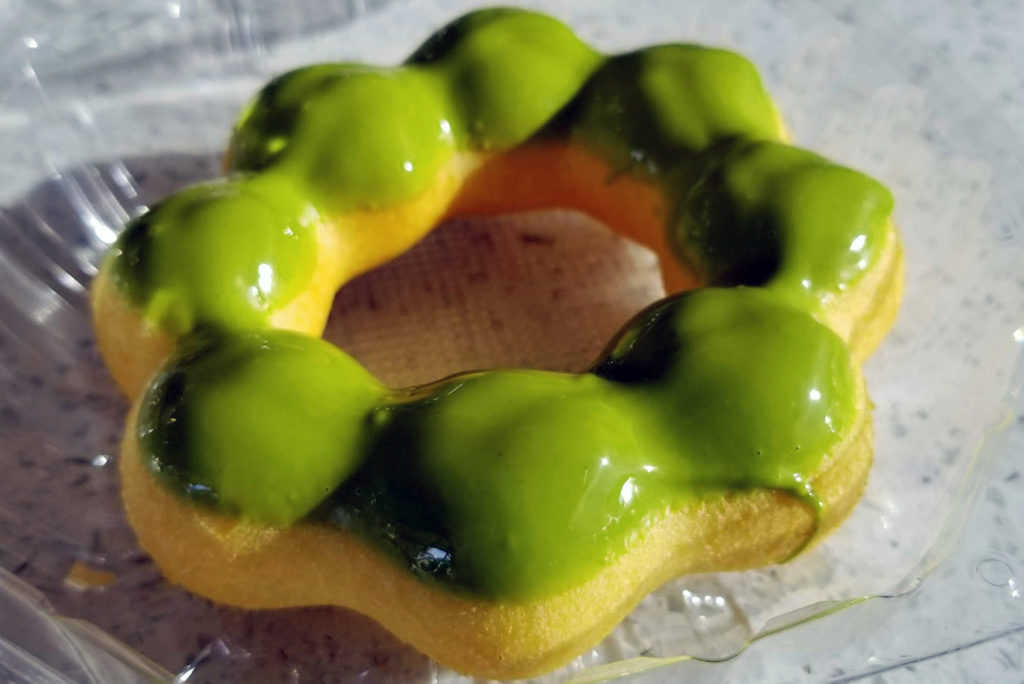
These are similar to traditional donuts, but have a noticeable stretchy, chewy texture. They also tend to come in flavors like green tea, black sesame and other popular Japanese flavors.
mochi pancakes
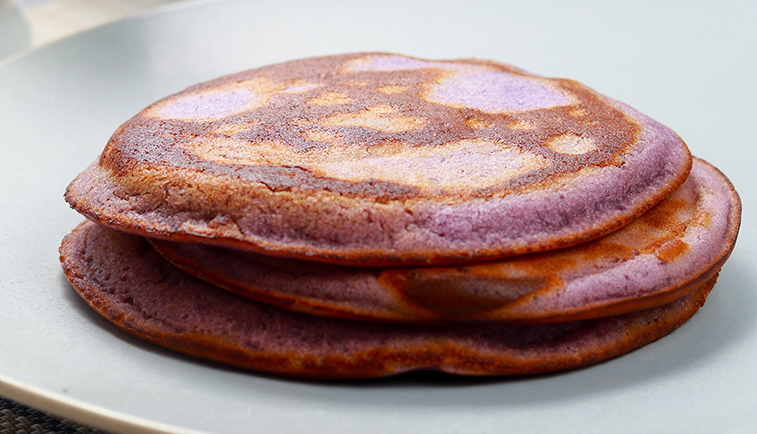
These became popular with the limited release of Trader Joe’s Ube Mochi Pancake mix. They are also very similar to traditional pancakes, but with a light chewiness.
butter mochi (a.k.a. mochi cake)
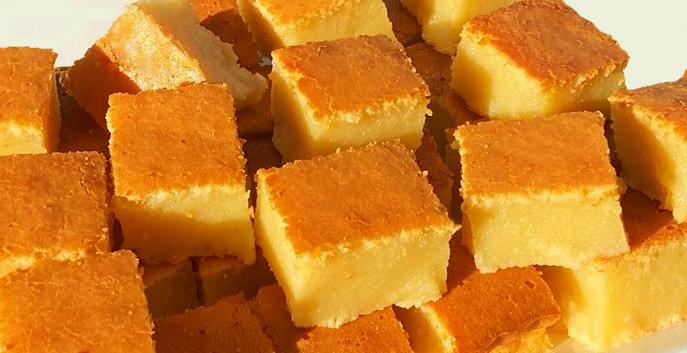
This is a traditional Hawaiian dessert that is believed to have Japanese and Filipino roots since it is a combination of mochi and bibingka, making it a soft and slightly chewy rice cake.
mochi balls
These small dessert balls are typically used as a topping on frozen yogurts and ice cream. You can find these and many fro-yo spots that carry Asian-inspired flavors. It can also refer to any mochigome-incorporated dessert shaped into balls.
sakuramochi (or sakura mochi)
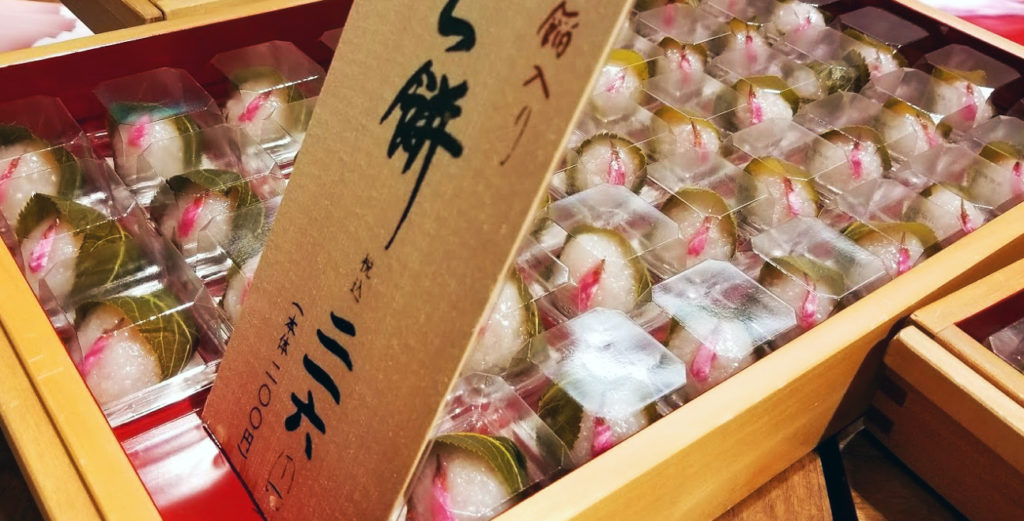
Sakuramochi is a traditional Japanese confection made of a pink glutinous rice ball filled with red azuki beans (anko) and wrapped in a cherry blossom leaf. It is typically eaten in the springtime in Japan during hinamatsuri (Girl’s Day) and hanami (cherry tree flower viewing season).
daifuku (or daifukumochi)

Daifuku is one of the most popular traditional Japanese desserts. Its literal translation is “great luck.” It is similar to mochi ice cream, but rather than ice cream, it is usually filled with anko, a red bean paste made from azuki beans, and/or a fruit filling.
Where to Find Mochi
You can find mochi (usually in the form of mochi ice cream) at your local Asian market or plenty of Japanese restaurants. Here is an interactive map where you can find various types of these Japanese treats!
How to Make it
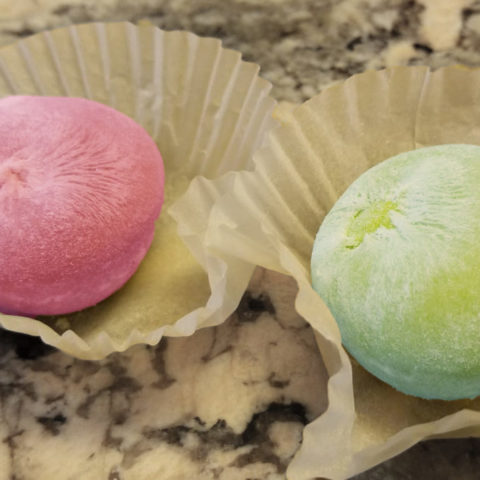
Mochi
Mochi in its purest form is made with just a few ingredients. Here is a quick and easy recipe that makes about a cup of bite-sized pieces. You can customize the look and flavor however you like by adding ice cream, anko, matcha powder, or food coloring. Make sure to at least double the ingredients if you plan on sharing!
Ingredients
- 1/2 cup mochiko flour
- 1/2 cup sugar
- 1/4 teaspoon baking powder
- 1/2 cup water
- 1/4 can coconut milk (13 1/2 oz - use full fat for best results)
- cornstarch for dusting
- ice cream, azuki red bean paste, green tea powder, or food coloring optional
Instructions
- Preheat oven to 275-300°F (higher temperature for higher elevations or older ovens).
- Mix flour, sugar, baking powder, water coconut milk and, if you like, a couple drops of food coloring together until completely even.
- Line baking dish with parchment paper, then add mixture on top. Cover entire dish with foil and bake for 50-65 minutes, or until slightly firm.
- Allow to cool for at least an hour. Dust with cornstarch. Then, cut into small pieces. Dust with green tea powder or serve with ice cream or azuki red beans, if you wish. Enjoy!
Recommended Products
Glutto earns a tiny commission from qualifying Amazon purchases.
Did you make this recipe?
Please leave a comment on the blog or share a photo on Instagram












